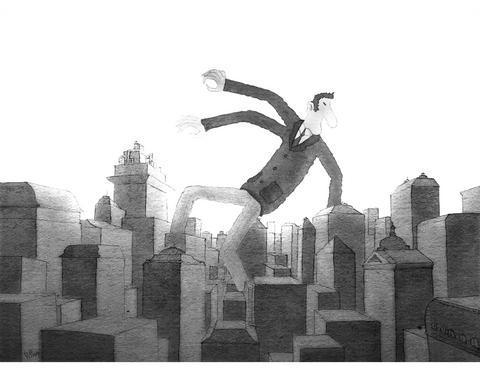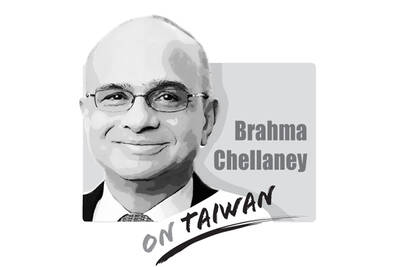A full-scale financial crisis is triggered by a sharp fall in the prices of a large set of assets that banks and other financial institutions own, or that make up their borrowers' financial reserves. The cure depends on which of three modes define the fall in asset prices.
The first -- and "easiest" -- mode is when investors refuse to buy at normal prices not because they know that economic fundamentals are suspect, but because they fear that others will panic, forcing everybody to sell at fire-sale prices.
The cure for this mode -- a liquidity crisis caused by declining confidence in the financial system -- is to ensure that banks and other financial institutions with cash liabilities can raise what they need by borrowing from others or from central banks.

This is the rule set out by Walter Bagehot more than a century ago: Calming the markets requires central banks to lend at a penalty rate to every distressed institution that would be able to put up reasonable collateral in normal times.
Once everybody is sure that, no matter how much others panic, financial institutions won't have to dump illiquid assets at a loss, the panic will subside. And the penalty rate means that financial institutions can't profit from the investment behavior that left them illiquid -- and creates an incentive to take due care to guard against such contingencies in the future.
In the second mode, asset prices fall because investors recognize that they should never have been as high as they were, or that future productivity growth is likely to be lower and interest rates higher. Either way, current asset prices are no longer warranted.
This kind of crisis cannot be solved simply by ensuring that solvent borrowers can borrow, because the problem is that banks aren't solvent at prevailing interest rates. Banks are highly leveraged institutions with relatively small capital bases, so even a relatively small decline in the prices of assets that they or their borrowers hold can leave them unable to pay off depositors, no matter how long the liquidation process.
In this case, applying the Bagehot rule would be wrong.
The problem is not illiquidity but insolvency at prevailing interest rates. But if the central bank reduces interest rates and credibly commits to keeping them low in the future, asset prices will rise. Thus, low interest rates make the problem go away, while the Bagehot rule -- with its high lending rate for banks -- would make matters worse.
Of course, easy monetary policy can cause inflation, and the failure to "punish" financial institutions that exercised poor judgment in the past may lead to more of the same in the future. But as long as the degree of insolvency is small enough that a relatively minor degree of monetary easing can prevent a major depression and mass unemployment, this is a good option in an imperfect world.
The third mode is like the second: A bursting bubble or bad news about future productivity or interest rates drives the fall in asset prices. But the fall is larger. Easing monetary policy won't solve this kind of crisis, because even moderately lower interest rates cannot boost asset prices enough to restore the financial system to solvency.
When this happens, governments have two options. First, they can simply nationalize the broken financial system and have the Treasury sort things out -- and reprivatize the functioning and solvent parts as rapidly as possible. Government is not the best form of organization of a financial system in the long term, and even in the short term it is not very good. It is merely the best organization available.
The second option is simply inflation. Yes, the financial system is insolvent, but it has nominal liabilities and either it or its borrowers have some real assets. Print enough money and boost the price level enough, and the insolvency problem goes away without the risks entailed by putting the government in the investment and commercial banking business.
The inflation may be severe, implying massive unjust redistributions and at least a temporary grave degradation in the price system's capacity to guide resource allocation. But even this is almost surely better than a depression.
Since late summer, the US Federal Reserve has been attempting to manage the slow-moving financial crisis triggered by the collapse of the US housing bubble.
At the start, the Fed assumed that it was facing a first-mode crisis -- a mere liquidity crisis -- and that the principal cure would be to ensure the liquidity of fundamentally solvent institutions.
But the Fed has shifted over the past two months toward policies aimed at a second-mode crisis -- more significant monetary loosening, despite the risks of higher inflation, extra moral hazard and unjust redistribution.
As Fed Vice Chair Don Kohn recently put it: "We should not hold the economy hostage to teach a small segment of the population a lesson."
No policymakers are yet considering the possibility that the financial crisis might turn out to be in the third mode.
J. Bradford DeLong is a professor of economics at the University of California at Berkeley and was assistant US Treasury secretary during the Clinton administration.
Copyright: Project Syndicate

China badly misread Japan. It sought to intimidate Tokyo into silence on Taiwan. Instead, it has achieved the opposite by hardening Japanese resolve. By trying to bludgeon a major power like Japan into accepting its “red lines” — above all on Taiwan — China laid bare the raw coercive logic of compellence now driving its foreign policy toward Asian states. From the Taiwan Strait and the East and South China Seas to the Himalayan frontier, Beijing has increasingly relied on economic warfare, diplomatic intimidation and military pressure to bend neighbors to its will. Confident in its growing power, China appeared to believe
After more than three weeks since the Honduran elections took place, its National Electoral Council finally certified the new president of Honduras. During the campaign, the two leading contenders, Nasry Asfura and Salvador Nasralla, who according to the council were separated by 27,026 votes in the final tally, promised to restore diplomatic ties with Taiwan if elected. Nasralla refused to accept the result and said that he would challenge all the irregularities in court. However, with formal recognition from the US and rapid acknowledgment from key regional governments, including Argentina and Panama, a reversal of the results appears institutionally and politically
In 2009, Taiwan Semiconductor Manufacturing Co (TSMC) made a welcome move to offer in-house contracts to all outsourced employees. It was a step forward for labor relations and the enterprise facing long-standing issues around outsourcing. TSMC founder Morris Chang (張忠謀) once said: “Anything that goes against basic values and principles must be reformed regardless of the cost — on this, there can be no compromise.” The quote is a testament to a core belief of the company’s culture: Injustices must be faced head-on and set right. If TSMC can be clear on its convictions, then should the Ministry of Education
The Chinese People’s Liberation Army (PLA) provided several reasons for military drills it conducted in five zones around Taiwan on Monday and yesterday. The first was as a warning to “Taiwanese independence forces” to cease and desist. This is a consistent line from the Chinese authorities. The second was that the drills were aimed at “deterrence” of outside military intervention. Monday’s announcement of the drills was the first time that Beijing has publicly used the second reason for conducting such drills. The Chinese Communist Party (CCP) leadership is clearly rattled by “external forces” apparently consolidating around an intention to intervene. The targets of